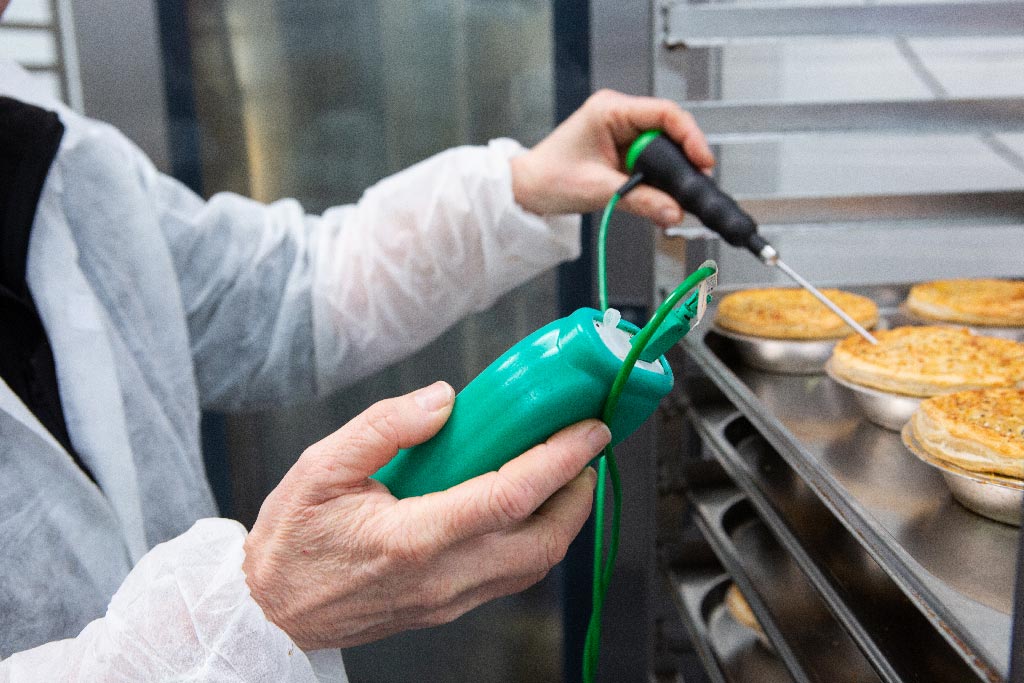EHO Visits — Temperature Tips From a Food Safety Advisor

EHO visits can seem scary, stressful and intimidating for businesses. But there’s no need for them to be. Environmental health officers only want to ensure you comply with food hygiene laws to keep your customers safe and your business HACCP compliant.
All elements of an EHO inspection are important, but we wanted to take a closer look at temperature. During an environmental health visit, how much do EHOs want to know about a business’ temperature practices? How do they ensure the equipment is working correctly, that the temperatures are being recorded properly and that any necessary corrective actions are being taken?
To find out, we spoke to Natalie Stanton, founder of online training platform The Safety Expert and Chartered Environmental Health Officer, food safety advisor, trainer, and content creator. Passionate about making food safety training easy and engaging for businesses, we thought there was no one better to help us understand how to fly through the temperature side of EHO visits.
Do you manually check any temperatures during a visit?
In short, yes. This will largely depend on the business and what processes are taking place at the time of the inspection.
On a general food hygiene inspection of a catering business, the EHO will most likely check fridge and freezer temperatures, cooked food and hot-held food temperatures. In my experience, they will generally use an infrared thermometer, and then if they get a temperature reading that is below the required temperature, they may then investigate further by probing the food.
In some cases, the EHO may ask the business to carry out the temperature checks. This is something I used to do to check that the business has a temperature probe and that they know how to use it (including cleaning it before use with a probe wipe).
What temperature records do you ask to see during a visit?
This will vary based on the premises. In general, fridge/ freezer temperatures, cooking/ reheating/ hot holding temperatures, and cooling records showing the time and temperature of cooling.
I will normally look back between 2-4 weeks. This is at the discretion of the officer. If they find discrepancies, they may look back further.
Do you prefer seeing electronic data (recorded using Bluetooth thermometers or data loggers)?
In my opinion, electronically recorded data is more accurate, there is less room for human error or someone forgetting to complete temperature checks. It is still important for there to be a process in place for corrective action to be taken, and all staff should be trained in what corrective action to take.
Are there any records that raise a red flag?
Yes!
- The exact same temperatures being recorded every day.
- Cooking temperatures always at precisely 75 °C.
- Cooling records showing that food was cooled to below 8 °C at ambient temperature (realistically, the temperature in the kitchen is never going to be below the ambient room temperature).
- Probe calibration records that repeatedly show precisely 0 °C for ice water and 100 °C for boiling water checks.
Do you conduct any checks on the business’ thermometers?
Yes, I will normally ask how they calibrate the temperature probe.
I either ask how they sanitise the probe before they use it, and I ask to see the probe wipes, or I ask a member of staff to demonstrate how they check the temperature of some food to observe if they sanitise the probe first.
I also check that the probe wipes are in date, that they have not dried out and that they comply with either BS EN 1276 or BS EN 13697.
Do you check calibration records?
If they are available, yes. Although not all businesses have them written down. For some small businesses, this isn’t a requirement (although it is definitely good practice). In those cases, I will ask them to describe how they calibrate the probe.
Are there any common temperature errors you find during EHO visits?
- Food in fridges being above 8 °C. This is more common in the summer months or when a food business is using a domestic fridge to store food (domestic fridges are not designed to have the door opened and closed so regularly).
- Food in bain maries below 63 °C.
- Food being placed into bain maries cold to be ‘warmed’ rather than reheating the food to over 75 °C before placing into the bain marie for hot holding above 63 °C.
Do you have any tips for businesses?
Make sure you have enough working probes on site, that are easily accessible and regularly used. Make sure your probe isn’t hidden away in a drawer so that you have to search for five minutes to find it when the EHO asks to see it (and then when you hand it to them, it isn’t even working).
Have separate probes for checking temperatures of raw and cooked foods (different colour probes are a good idea).
Ensure all staff are trained in how to correctly check temperatures, what the correct temperatures are and what action to take if they find temperatures out of the required limits.
Is there anything else that you would like businesses to know?
EHOs are realistic, they know things can go wrong. When it comes to monitoring temperatures and keeping records, if things go wrong (i.e. foods are at the wrong temperature), this is fine, provided you have taken some sort of corrective action to put things right. And don’t forget to record this to show what you have done!
To learn more about food safety and to explore Natalie’s video-based food hygiene training, visit The Safety Expert website or follow her on Instagram.

You might also like:
Beginner’s Guide to HACCP Temperature Requirements
A Guide to ISO EN-13485-Certified Thermometers for Cold Chain Temperature Monitoring
5 Best Catering Thermometers For Your HACCP Plan